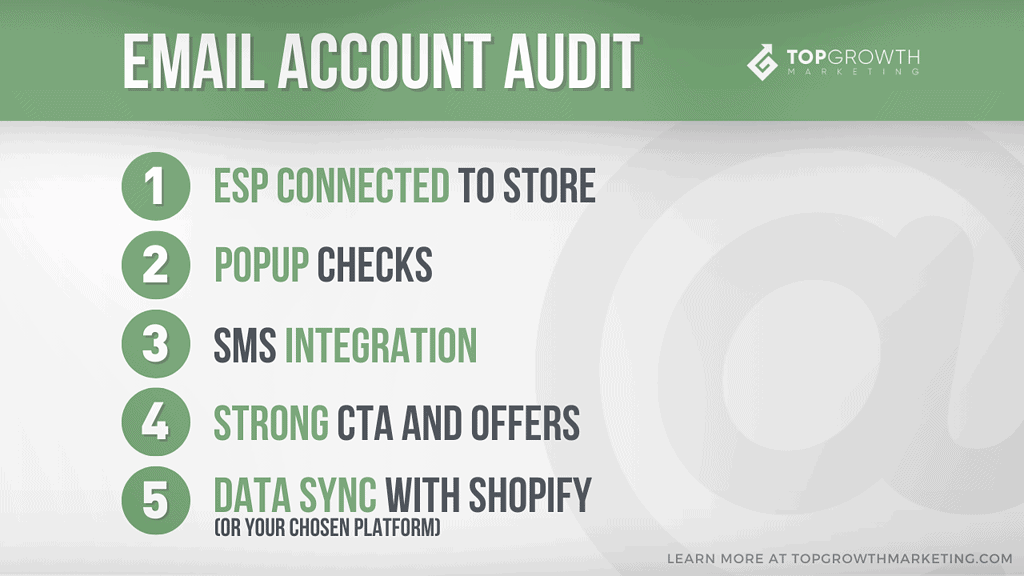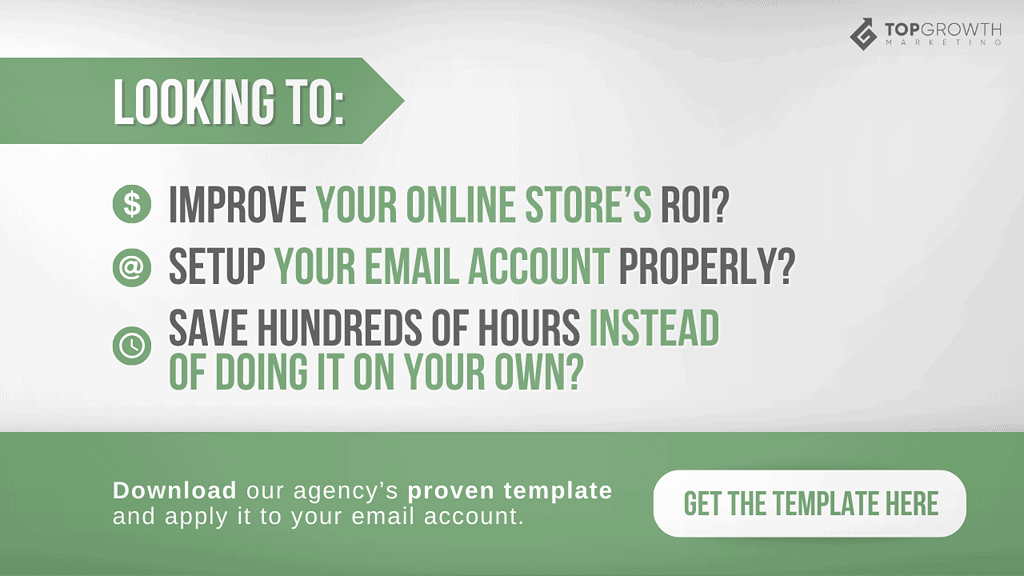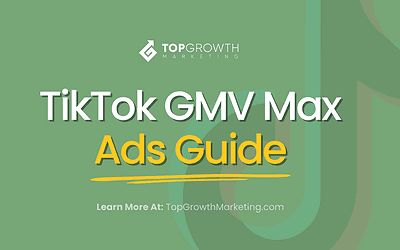In today’s digitized marketplace, eCommerce email marketing stands as a formidable tool to foster engagement, drive conversions, and boost sales.
An email marketing strategy, however, is only as effective as the mechanism that supports it.
And that’s where regular audits come in. In this post, we’ll go through the main elements of our email marketing audits for our eCommerce clients.
If you’re doing email marketing for your store, you’ll want to give this a lot of attention because I’m not holding anything back and you’ll get all the information I’d give to a client.
Email Account Audit
I’ll go through the parts of the audit one by one, but I won’t get into every detail. Some are self-explanatory.
That said, if you need more information about any part of the audit, contact us and we’ll be happy to provide guidance.
Why It Matters: An email account audit ensures the foundational elements of your email campaigns are correctly set up. This forms the bedrock for other components of your email strategy.
- ESP Connected to Store: Ensuring that your Email Service Provider (ESP) is seamlessly connected to your store is crucial. This allows for easy data flow and syncing, which is pivotal for dynamic content and triggers.
- Popup Checks: Multiple popups can be annoying to users. Ensure effective popups are live to capture leads without hampering user experience.
- SMS Integration: As mobile usage soars, SMS becomes an essential arm of any email strategy, providing a direct line to your consumers.
- Strong CTAs and Offers: The strength of your CTAs and the appropriateness of your offers can make or break a campaign. These elements need to be compelling and aligned with your brand messaging. I can’t stress enough how big of a difference good CTAs will make.
- Data Sync with Shopify (or your chosen platform): If Shopify powers your eCommerce platform, syncing data ensures real-time updates, which is crucial for inventory, price updates, and more.
Tracking
Why It Matters: Tracking customer activity gives you insights into their journey, allowing for more personalized and timely engagements.
- Website Activity and Customer Data: Ensure that every action a user takes, from viewing a product to adding one to their cart, is correctly tracked. This data powers segments, triggers, and personalized content. If you’re not too familiar with setting up analytics, this is an area worth addressing with a professional because it can be tricky to get right.
- UTM Parameters: Having UTM parameters toggled on ensures that you can track the performance of your emails, determining which campaigns are driving traffic and sales.
Sending & Deliverability
Why It Matters: What use is a perfectly crafted email if it never reaches the recipient or ends up in spam? Even though this seems obvious, it’s an area we often see neglected.
- Brand Sender Domain: This authenticates your emails and boosts deliverability.
- Spam Lists: Regularly check if your brand has been erroneously added to spam lists, and if so, take remedial actions.
- Authentication Protocols: SPF and DKIM are technical standards that help prevent spoofed or forged emails. Ensure these are correctly set up. You can find a guide about spam prevention here, but again, worth addressing with a pro.
List & Segments
Why It Matters: When it comes to email marketing, the phrase “The money is in the list” isn’t an overstatement. A well-curated and segmented email list is the beating heart of your email marketing efforts.
- Engagement Level Segments: Segmenting subscribers based on their engagement level allows for targeted messaging. For instance, you might send a re-engagement campaign to subscribers who haven’t opened an email in the past three months or offer special promotions to your most engaged subscribers.
- Order Level Segmentation: This refers to segmenting your subscribers based on their purchasing behavior. Whether they’re first-time buyers, repeat customers, or high-value purchasers, segmenting by order level allows for more personalized messaging.
- Steady List Growth: Monitoring the growth of your email list is a key performance indicator of your acquisition efforts. A steady increase indicates that your lead-generation tactics are effective and 5% – 10% per month is a good benchmark to go after.
And, speaking of that…
Benchmarks
Establishing benchmarks based on your email list size and the frequency of emails sent is essential to gauge the health and success of your campaigns.
Common benchmarks include ensuring that 30% of your revenue is coming from email or achieving a particular revenue split between flows and campaigns.
A good revenue split that we aim for is 60/40 flows to campaigns.
In addition to these top-level email marketing benchmarks, we also look at the following:
- Open Rate Over 50%: The open rate represents the percentage of recipients who opened your email out of the total number of emails sent. A high open rate indicates that your subject lines are compelling, and recipients recognize your brand as valuable or interesting.
- Click-Through Rate Over 5%: The click-through rate (CTR) is the percentage of recipients who clicked on a link within your email. It’s a direct measure of how effective your email content is at driving action.
- Click-to-Open Rate Over 10%: A CTOR over 10% indicates that your content is engaging and resonates with those who have shown initial interest by opening the email. It’s a more granular way to evaluate the effectiveness of the email’s body compared to the broader CTR.
- Revenue per Recipient Over $0.10 (30-day account average): A value over $0.10 per recipient suggests that your email campaigns, on average, are effective at driving conversions. This measure is an essential ROI indicator, helping businesses understand the tangible returns on their email marketing investments.
✅ GET OUR AGENCY EMAIL MARKETING TEMPLATE FOR FREE. CLICK HERE.
Email Flows
This section goes deep into specific email sequences, like cart abandonment, welcome series, cross-sell flows, etc. For each flow, essential metrics such as open rate, click-through rate, and revenue per recipient are assessed.
For instance:
Cart Abandonment Flow
This addresses users who’ve added products to their cart but didn’t complete the purchase. A successful flow might include multiple reminder emails, perhaps an incentive, and should report a decent revenue per recipient.
Welcome Flow
When we dive into the nitty-gritty of an eCommerce welcome flow, we’re first checking if it’s up and running and if the cash register is cha-chinging.
Now, one “hello” email isn’t gonna cut it. We’re talking about a series of warm, “get to know us” messages.
Importantly, it should also register a tangible monetary benefit, aiming for over $1.50 in revenue per recipient.
Behind the scenes, it’s crucial that once a subscriber makes a purchase, they’re no longer part of this introductory flow to maintain relevance.
The content itself should set clear expectations about brand interactions, offer value through incentives like gifts or discounts, and, most importantly, lay the foundation for trust. This initial interaction with the subscriber can significantly influence the future of this budding customer relationship.
The cart abandonment and welcome flows are the two foundational elements that your campaign needs. From there, you’ll want to compose and set up more specific flows such as back-in-stock, birthday, and anniversary flows.
Email marketing really shines when you get all the little things right so don’t put off these flows, and use our audit template to guide you in their creation.
Audit Your Email Flow Often, and Do It Thoroughly
Regular eCommerce email marketing audits are not just a recommendation; they’re a necessity.
As the eCommerce landscape evolves, staying on top of your email marketing game can mean the difference between thriving and merely surviving.
Interested in optimizing your eCommerce email strategy? Beyond our audit template, we’re a full-service eCommerce email marketing agency, so get in touch and we’ll help you figure out the exact steps to take in order to maximize your email marketing revenue.
FAQ Section
Why is email marketing essential for eCommerce?
While some folks are chasing the latest social media algorithm, email marketing remains the trusty steed of eCommerce.
It’s your direct line to the customer, no middleman. It’s where you can talk to them one-to-one, and make them feel like they’re not just another face in the crowd.
Plus, the ROI? Let’s just say that if email marketing were a song, it’d top the charts year after year.
How often should I conduct an email marketing audit?
Think of your email marketing as a garden.
You wouldn’t plant seeds and forget about them, right? An email marketing audit is like checking up on those plants, ensuring they’re getting enough water, sunlight, and love.
Doing it once and forgetting about it is a no-go. For best results, play the role of the attentive gardener and check in at least quarterly.








0 Comments